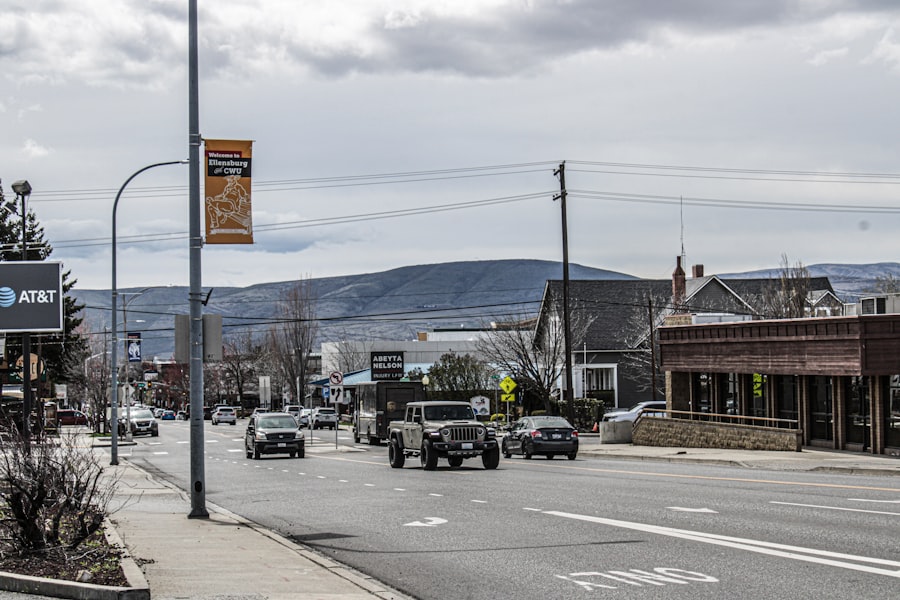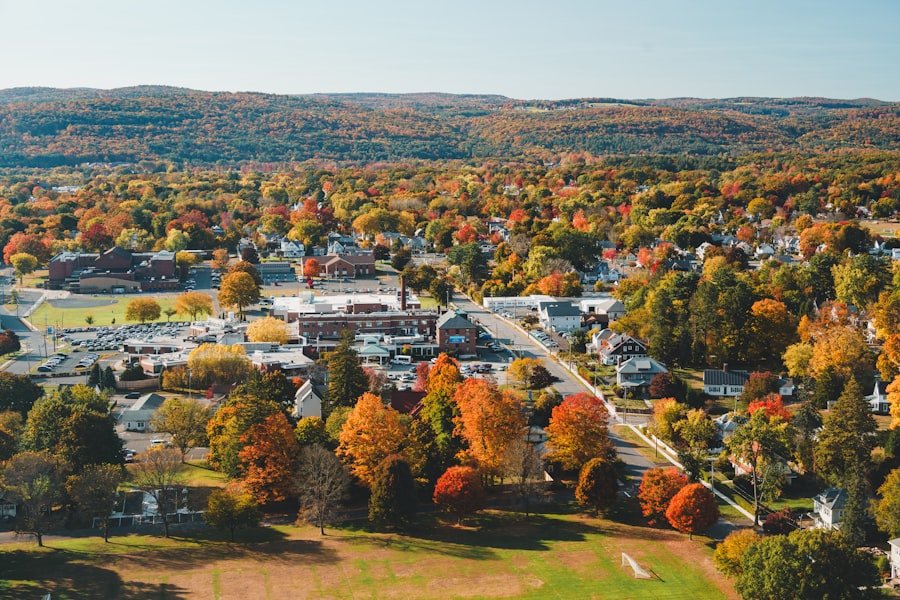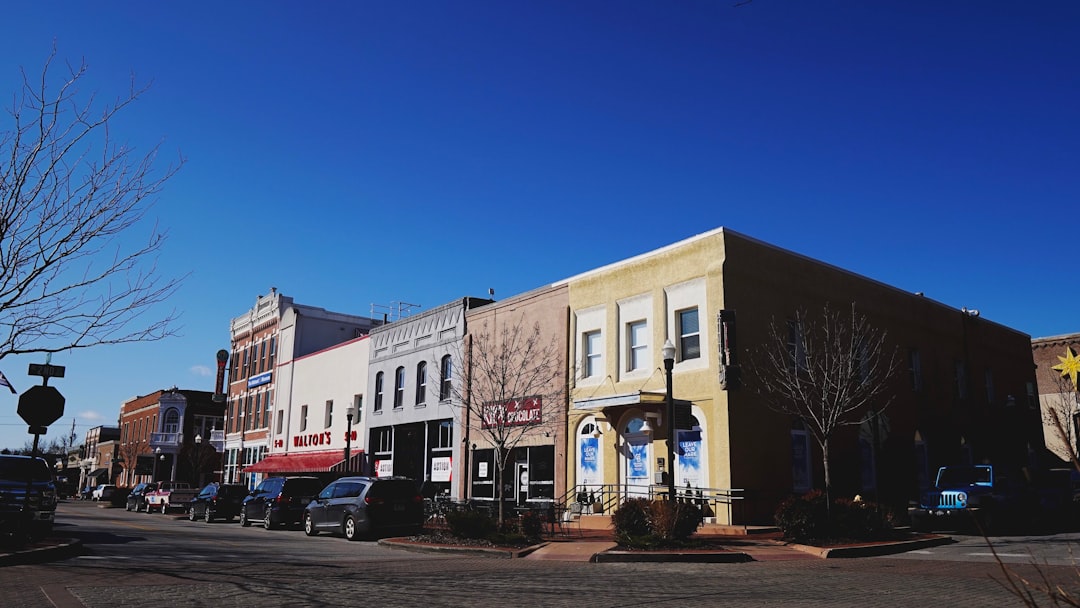The decline of small towns in the Midwest has become a pressing issue that resonates deeply within the fabric of American society. Once vibrant hubs of community life, these towns have seen a significant decrease in population, economic activity, and social engagement over the past few decades. Many factors have contributed to this decline, including the migration of residents to urban areas in search of better job opportunities, the closure of local businesses, and the overall shift in lifestyle preferences.
As a result, small towns that once thrived with bustling main streets and close-knit communities now face the stark reality of empty storefronts and dwindling populations. This decline is not merely a statistical phenomenon; it represents a profound loss of identity and culture for many Midwestern communities. The once-familiar sights of children playing in the streets, neighbors gathering for community events, and local shops serving as social hubs have been replaced by silence and desolation.
The emotional toll on residents who remain is palpable, as they grapple with the changes that have transformed their hometowns into shadows of their former selves. The decline of small towns in the Midwest is not just an economic issue; it is a cultural crisis that calls for urgent attention and innovative solutions.
Key Takeaways
- Small towns in the Midwest are experiencing a decline in population and economic activity.
- Factors contributing to the decline include the loss of manufacturing jobs, outmigration of young people, and lack of investment in infrastructure.
- Small towns play a crucial role in the Midwest, providing a sense of community, preserving cultural heritage, and supporting local agriculture.
- Revitalizing small towns requires strategies such as community engagement, attracting businesses, investing in infrastructure, and promoting tourism.
- To support revitalization efforts, it is important to engage local residents, empower community leaders, and support entrepreneurship and small business development.
Factors Contributing to the Decline
Several interrelated factors have contributed to the decline of small towns in the Midwest. One of the most significant is the economic shift that has occurred over the last few decades. As industries have evolved and technology has advanced, many manufacturing jobs that once provided stable employment in these towns have disappeared.
The rise of automation and globalization has led to factory closures and job relocations, leaving many residents without viable employment options. This economic upheaval has prompted younger generations to leave their hometowns in search of better prospects elsewhere, further exacerbating the population decline. In addition to economic factors, social dynamics play a crucial role in the decline of small towns.
The allure of urban living, with its promise of diverse cultural experiences, entertainment options, and educational opportunities, has drawn many individuals away from rural areas. This migration trend has not only diminished the population but has also led to an aging demographic in small towns, as younger residents seek opportunities in larger cities. Furthermore, the lack of access to quality healthcare, education, and recreational facilities in many small towns has made them less attractive to potential residents.
These factors create a cycle of decline that is difficult to break, as each loss compounds the challenges faced by these communities.
The Importance of Small Towns in the Midwest

Despite the challenges they face, small towns in the Midwest hold immense importance within the broader context of American society. They serve as vital centers of culture, history, and community identity. Each town has its unique story, shaped by generations of residents who have contributed to its character and charm.
Small towns often embody values such as neighborliness, resilience, and a strong sense of belonging that are increasingly rare in larger urban environments. They provide a sense of place where individuals can forge meaningful connections and build lasting relationships. Moreover, small towns play a crucial role in supporting local economies and agriculture.
Many rural communities are home to family-owned farms and businesses that contribute significantly to the agricultural sector. These small-scale operations not only provide food for local markets but also foster a sense of stewardship for the land and environment. The preservation of small towns is essential for maintaining agricultural diversity and ensuring food security for future generations.
By recognizing the importance of these communities, society can work towards revitalizing them and harnessing their potential for growth and sustainability.
Strategies for Revitalizing Small Towns
| Strategy | Description | Impact |
|---|---|---|
| Community Engagement | Involving local residents in decision-making and planning processes | Increased sense of ownership and pride in the town |
| Economic Diversification | Encouraging the development of new industries and businesses | Job creation and increased economic stability |
| Infrastructure Improvement | Upgrading roads, utilities, and public spaces | Enhanced quality of life and attractiveness to visitors |
| Cultural Preservation | Preserving and promoting local traditions, arts, and heritage | Boosting tourism and preserving community identity |
Revitalizing small towns in the Midwest requires a multifaceted approach that addresses both economic and social dimensions. One effective strategy is to promote local entrepreneurship by providing resources and support for aspiring business owners.
By fostering a culture of entrepreneurship, small towns can create new job opportunities and stimulate economic growth while retaining local talent. Another key strategy involves enhancing community infrastructure and public services. Investments in transportation, broadband internet access, and recreational facilities can significantly improve the quality of life for residents and attract newcomers.
Upgrading public spaces such as parks and community centers can also foster social engagement and encourage residents to participate in local events. By creating an environment that is conducive to both living and working, small towns can position themselves as desirable places to settle down.
Community Engagement and Empowerment
Community engagement is essential for revitalizing small towns in the Midwest. Residents must feel empowered to take an active role in shaping their communities’ futures. This can be achieved through initiatives that encourage participation in local decision-making processes, such as town hall meetings or community forums.
By giving residents a voice, towns can harness collective wisdom and creativity to address challenges and identify opportunities for growth. Empowerment also involves fostering a sense of pride in local heritage and culture. Celebrating unique traditions, hosting festivals, and promoting local artists can help strengthen community bonds while attracting visitors from outside the area.
When residents feel connected to their town’s history and culture, they are more likely to invest their time and resources into its revitalization efforts. Building a strong sense of community identity can serve as a catalyst for positive change.
Attracting and Retaining Businesses

Attracting and retaining businesses is crucial for the economic revitalization of small towns in the Midwest. Local governments can play a pivotal role by creating business-friendly policies that incentivize entrepreneurs to set up shop in their communities. This may include tax breaks, streamlined permitting processes, or support for workforce development programs that ensure residents have the skills needed for available jobs.
Additionally, fostering collaboration between local businesses can create a supportive ecosystem that encourages growth. Business associations or chambers of commerce can facilitate networking opportunities, promote joint marketing efforts, and provide resources for professional development. By working together, businesses can enhance their visibility and competitiveness while contributing to a vibrant local economy.
Investing in Infrastructure and Public Services
Investing in infrastructure and public services is fundamental to revitalizing small towns in the Midwest. Upgrading roads, bridges, and public transportation systems can improve accessibility for residents and visitors alike. Reliable internet access is particularly important in today’s digital age; ensuring that all residents have access to high-speed internet can open up new opportunities for remote work and online education.
Public services such as healthcare facilities, schools, and recreational amenities also play a vital role in attracting families to small towns. Communities that prioritize these services demonstrate their commitment to enhancing residents’ quality of life. By investing in infrastructure and public services, small towns can create an environment that supports growth while fostering a sense of belonging among residents.
Promoting Tourism and Cultural Heritage
Promoting tourism is another effective strategy for revitalizing small towns in the Midwest. Many small towns boast rich histories, unique architecture, and natural beauty that can attract visitors seeking authentic experiences away from urban centers. Developing tourism initiatives that highlight local attractions—such as historical landmarks, festivals, or outdoor activities—can generate revenue while showcasing the town’s cultural heritage.
Cultural heritage tourism not only brings economic benefits but also fosters pride among residents. When communities celebrate their unique stories through events or marketing campaigns, they create opportunities for locals to engage with their history while inviting others to appreciate it as well. By positioning themselves as destinations for cultural exploration, small towns can tap into a growing market of travelers seeking meaningful experiences.
Supporting Local Agriculture and Food Production
Supporting local agriculture is essential for sustaining small towns in the Midwest. Family-owned farms contribute significantly to both local economies and food systems; therefore, initiatives aimed at promoting local food production can have far-reaching benefits. Farmers’ markets, community-supported agriculture (CSA) programs, and farm-to-table initiatives not only provide fresh produce but also strengthen connections between consumers and producers.
Encouraging sustainable agricultural practices can also enhance environmental stewardship within these communities. By promoting organic farming methods or regenerative agriculture techniques, small towns can position themselves as leaders in sustainable food production while attracting environmentally conscious consumers. Supporting local agriculture not only bolsters economic resilience but also fosters a sense of community pride rooted in shared values around food security and environmental responsibility.
Encouraging Entrepreneurship and Small Business Development
Encouraging entrepreneurship is vital for revitalizing small towns in the Midwest. Local governments can establish incubators or co-working spaces that provide resources for aspiring entrepreneurs to develop their ideas into viable businesses. Workshops on business planning, marketing strategies, and financial management can equip individuals with the skills needed to succeed.
Moreover, fostering a culture of innovation within these communities can inspire new ideas and ventures. Collaborations between educational institutions and local businesses can create pathways for students to gain practical experience while contributing fresh perspectives to existing enterprises. By nurturing entrepreneurship at all levels—from youth programs to adult education—small towns can cultivate an environment where creativity thrives.
The Role of Government and Nonprofit Organizations
The role of government and nonprofit organizations is crucial in supporting revitalization efforts for small towns in the Midwest. Local governments must prioritize policies that promote economic development while addressing social needs within their communities. This includes allocating funding for infrastructure projects or providing grants for community initiatives aimed at enhancing quality of life.
Nonprofit organizations also play an essential role by mobilizing resources and expertise to support revitalization efforts. They often serve as advocates for community needs while facilitating partnerships between various stakeholders—residents, businesses, government agencies—to drive positive change. By collaborating with nonprofits focused on economic development or community engagement initiatives, small towns can leverage additional resources while fostering a spirit of cooperation among diverse groups.
In conclusion, revitalizing small towns in the Midwest requires a comprehensive approach that addresses economic challenges while fostering community engagement and empowerment. By recognizing their importance within American society—both culturally and economically—communities can work towards innovative solutions that breathe new life into these cherished places. Through strategic investments in infrastructure, support for local businesses, promotion of tourism, encouragement of entrepreneurship, and collaboration with government entities and nonprofits alike—small towns can reclaim their vitality while preserving their unique identities for generations to come.
In recent years, the decline of small towns in the Midwest has become a pressing issue, with many communities facing economic challenges and population loss. To address these concerns, innovative strategies are being explored to revitalize these areas and ensure their sustainability. One such approach is detailed in an insightful article on MyGeoQuest, which discusses various methods to save small towns in the Midwest. The article highlights the importance of community engagement, investment in local businesses, and the development of sustainable infrastructure. For more information on these strategies, you can read the full article by visiting mygeoquest.
com/’>MyGeoQuest.
WATCH NOW! Why America’s Heartland Is Disappearing Fast
FAQs
What are the main challenges facing small towns in the Midwest?
The main challenges facing small towns in the Midwest include population decline, lack of economic opportunities, aging infrastructure, and limited access to healthcare and education.
What are some strategies for revitalizing small towns in the Midwest?
Some strategies for revitalizing small towns in the Midwest include promoting entrepreneurship, investing in infrastructure improvements, supporting local businesses, and attracting new residents through marketing and community development efforts.
How can small towns in the Midwest attract and retain young people?
Small towns in the Midwest can attract and retain young people by creating job opportunities, providing affordable housing options, investing in recreational and cultural amenities, and fostering a sense of community engagement and belonging.
What role can local government play in saving small towns in the Midwest?
Local government can play a crucial role in saving small towns in the Midwest by implementing policies that support economic development, investing in public infrastructure, providing essential services, and fostering a business-friendly environment.
What are some successful examples of small towns in the Midwest that have been revitalized?
Some successful examples of small towns in the Midwest that have been revitalized include Red Wing, Minnesota, which has focused on historic preservation and tourism, and Holland, Michigan, which has invested in downtown revitalization and attracting new businesses.
